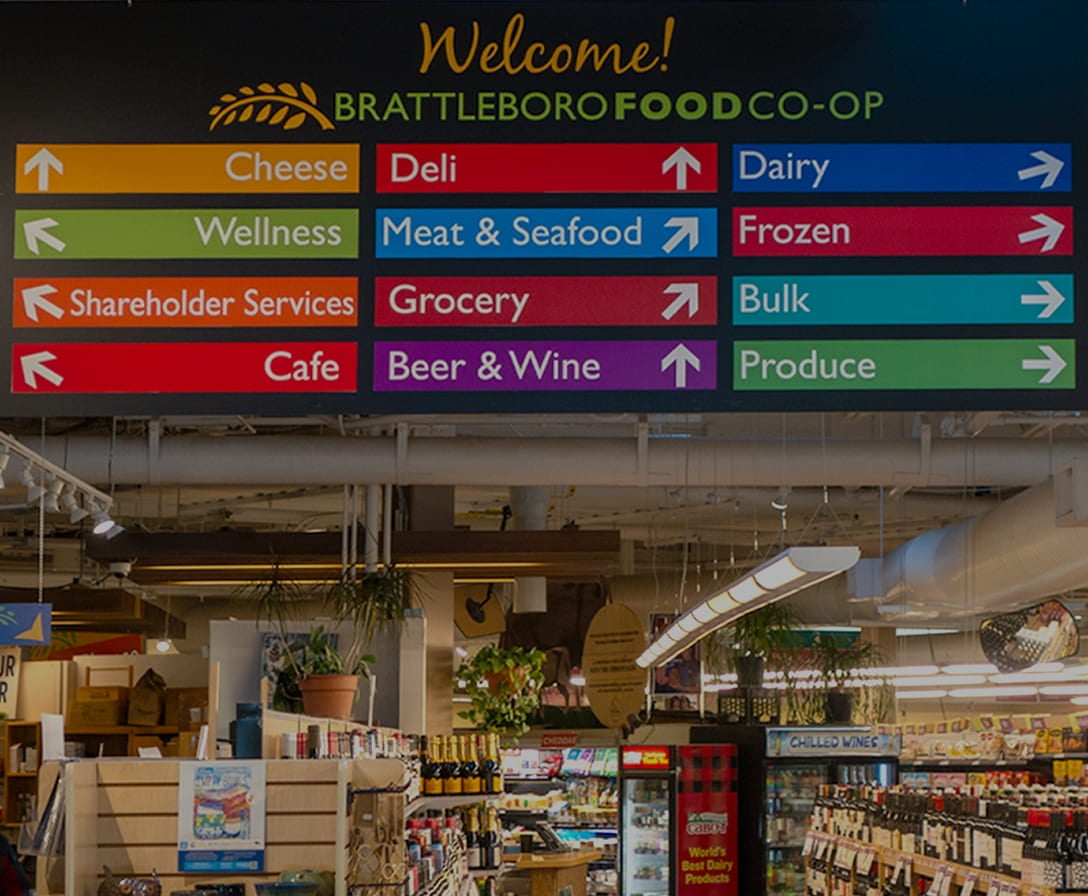It’s All About the Food: Cheese
Cheese can be included as part of a healthy diet, and since it is so much a part of the local food scene here in Vermont, it must be recognized and appreciated. Vermont has the largest number of artisan cheesemakers per capita in the U.S., and many of these locally produced cheeses are sold at the Co-op. Unlike mass-produced cheese, artisan cheese is made in small quantities, by hand, from fresh, locally available milk from a variety of animals that include Vermont cows, sheep, goats, and buffalo.
There is no doubt that Americans love their cheese! Cheese intake by the American population as a whole is on the increase. The statistics report that, as of 2017, that we ate 39 pounds per capita, which is significantly higher than in 1970 when it was only about 10 pounds. Other countries like France, Cyprus, and Denmark still outdo us with the amounts that they eat though.
Cheese has a lot to say for itself nutritionally, since it is an excellent source of protein and calcium. It does contain other nutrients in smaller amounts: vitamin A, vitamin B-12, riboflavin, zinc, selenium, and phosphorus. Most cheeses contain a good amount of sodium too, since it is not only naturally occurring in the milk but also added during the cheesemaking process. One major drawback with cheese is its fat content—approximately 65- to 80-percent fat—and much of this is saturated solid fat. For those with cardiac-health and high-cholesterol issues, it must be consumed wisely and with discretion. For people with these health risks, cheese should be used as an occasional condiment rather than in large, concentrated amounts. But in spite of its drawbacks for cardiovascular health, cheese does have other benefits in both its role in improving bone health as well as preventing dental cavities. Research has also found that one particular fat, referred to as CLA or conjugated linoleic acid (found only in grass-fed animals), is protective against heart disease and has a variety of other health benefits as well that include immune and inflammatory system support and improved bone mass and blood sugar regulation. This is a plus since many animals in Vermont are grass fed.
Many people are allergic to cow’s milk but can tolerate milk from other animals such as goat or sheep. Fortunately these kinds of cheese are widely available in this area. In fact, goat cheese is one of the fastest growing divisions among specialty cheeses. Goat and sheep cheese are easier to digest since they have a greater number of short- and medium-chain fatty acids. This means their fat globules are smaller and more evenly dispersed. These cheeses also contain more preformed vitamin A than cow’s milk, thus making the cheeses very white. Cow’s milk cheese on the other hand has more of an orange shade, due to higher levels of beta-carotene.
Lactose intolerance is another concern for those who would like eat cheese. Lactose content in cheeses varies, but generally aged cheeses such as cheddar and Swiss have less lactose. Soft cheeses such as brie and goat cheese are often accepted well by those with lactose intolerance but since symptoms vary from one person to the next, the only real way to find out is to test a small amount and see how your body responds.
Try many of the delicious cheeses from Vermont and support our hardworking cheesemakers! We are indeed fortunate to have such a wealth of them in this state!
By Chris Ellis, Staff Nutritionist
About Producer of The Month

Shop Online

On Sale Now!

